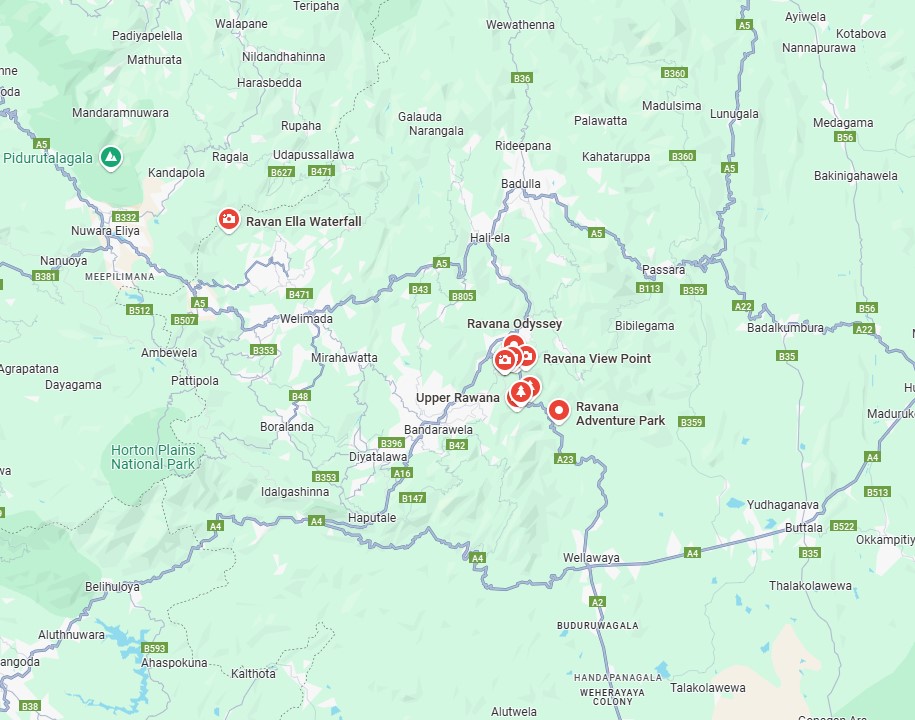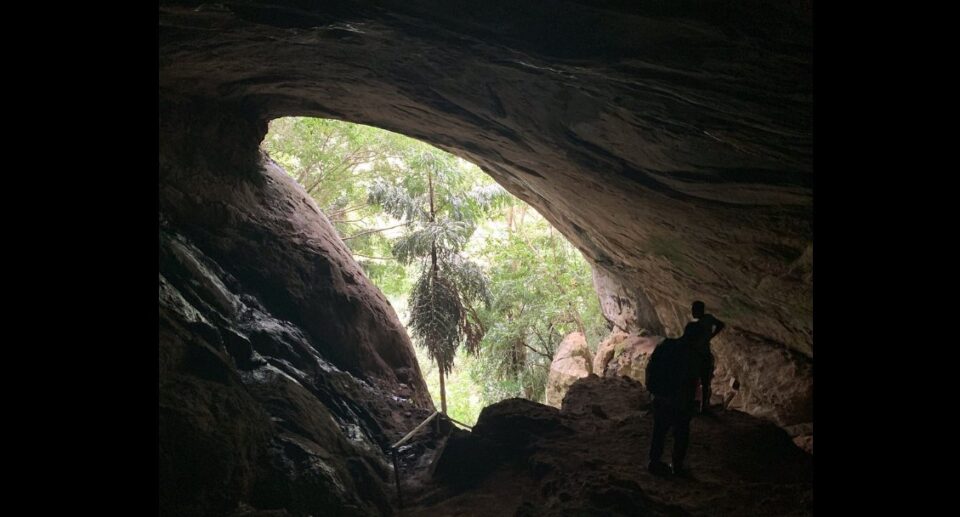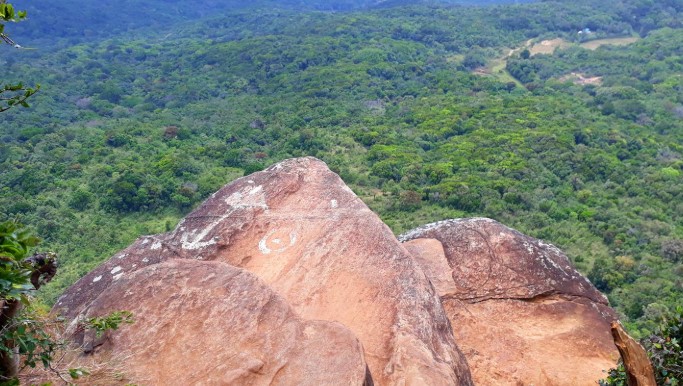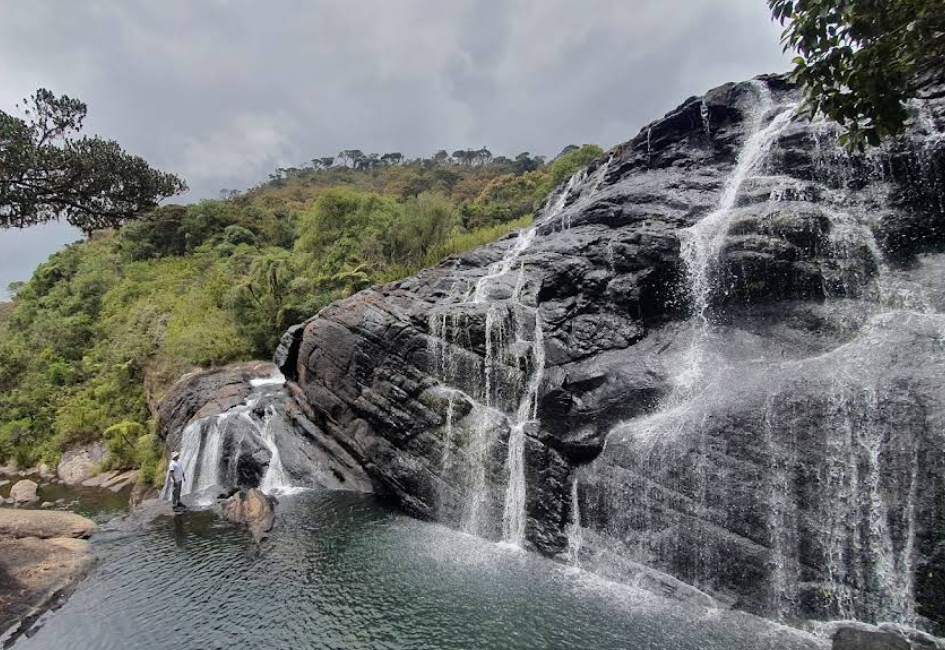Ravana Falls: A Majestic Cascade in Sri Lanka’s Hill Country
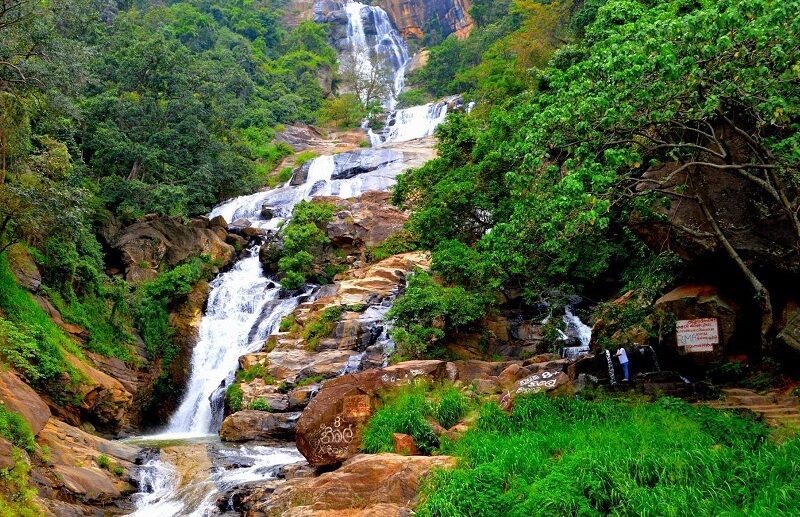
A Timeless Natural Wonder in Badulla, Sri Lanka
Sri Lanka, also commonly referred to as the “Pearl of the Indian Ocean,” is home to an endless array of natural wonders. Among them is the breathtaking Ravana Falls in the Badulla District of the Uva Province, located near the scenic town of Ella. Tumbling over precipitous rocky slopes into a pool below, Ravana Falls is not only one of the widest waterfalls in the country but also filled to brimming with cultural folklore and natural significance. This essay examines the historical, geographical, and ecological facts of Ravana Falls, along with its growing stature as an important tourism destination.
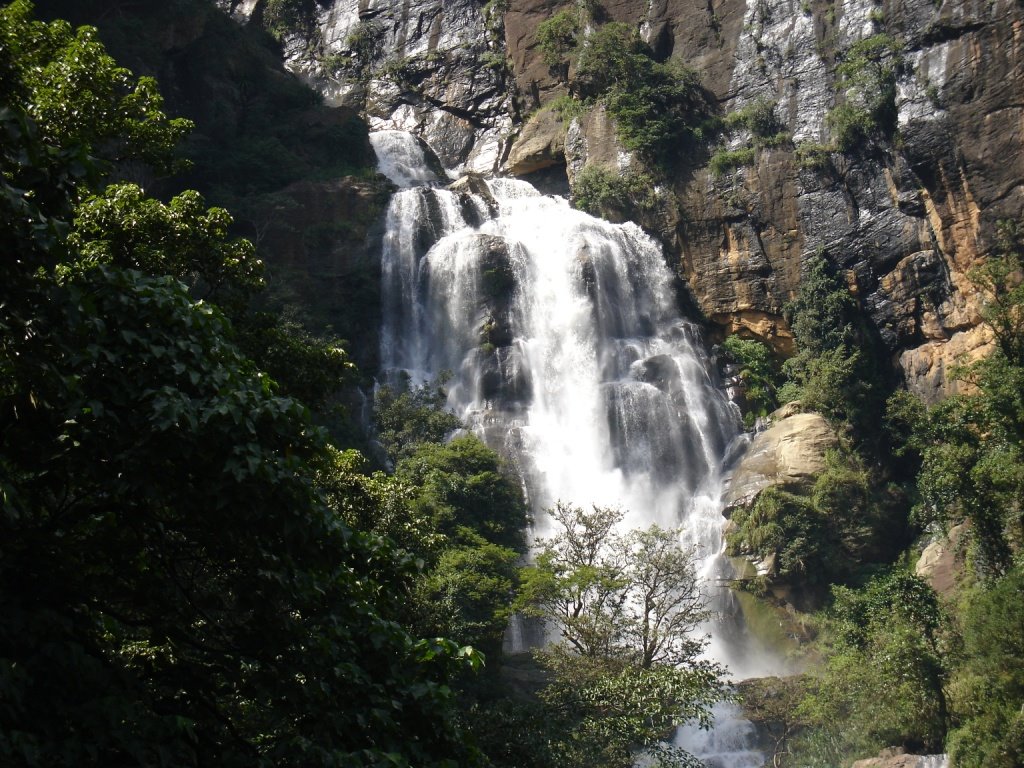
Geographical and Physical Features
Ravana Falls, or Ravana Ella, is approximately 6 kilometers from Ella, a charming hill-country town popular with local and foreign tourists. The waterfall drops some 25 meters (82 feet) in altitude, forming a three-tiered cascade, which is especially prominent during the monsoon season when rain increases the water level substantially. The water supply to the falls is provided by a tributary of the Kirindi Oya, which meanders through thick jungle and rocky terrain before falling into the valley below.
Ravana Falls has visibility from the main road that links Ella and Wellawaya, and therefore, it is accessible to tourists. The site is ringed with greenery, fog-clad mountains, and outcrops, and the location offers a dramatic visual feast in addition to a soothing atmosphere with the sound of the falls.
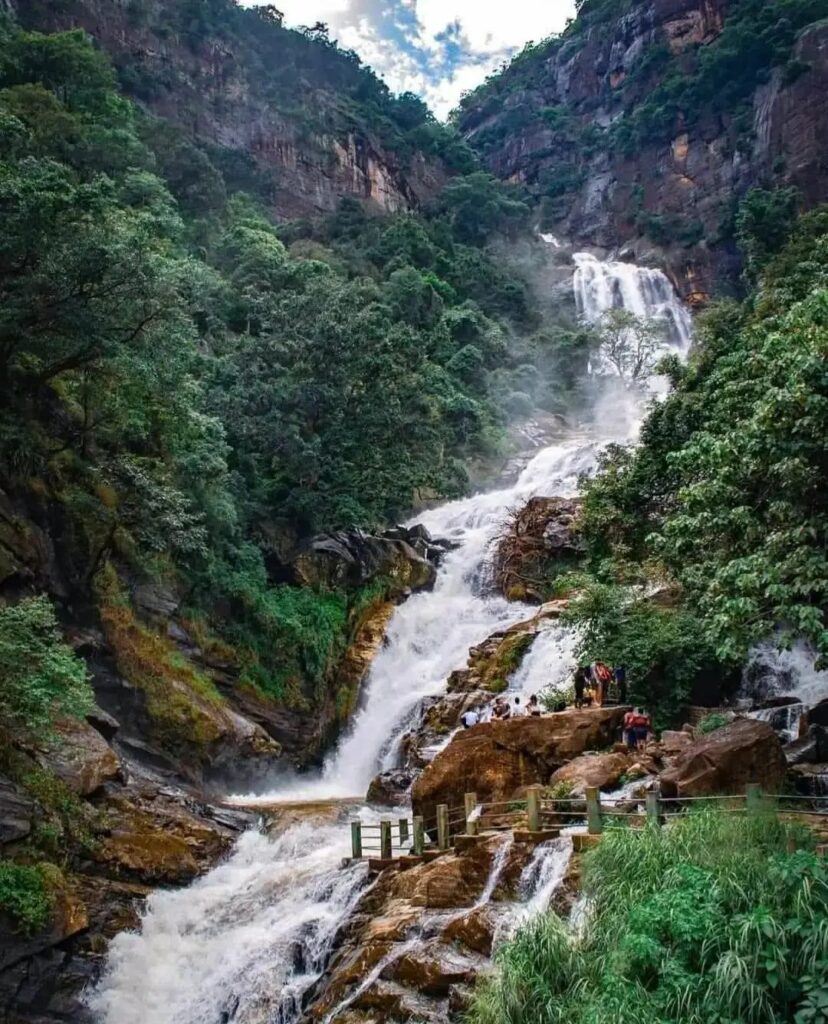
Mythological Significance
Another one of the most fascinating aspects of Ravana Falls is its association with the Hindu epic Ramayana. Legend says that the falls have a strong association with King Ravana, the demon king of Lanka, with ten heads, who had ruled a mythical city in Sri Lanka thousands of years ago. In the epic tale, Ravana kidnapped Princess Sita, the wife of the Hindu god Rama, and brought her to his island kingdom. He is said to have hidden her in a cave behind this same waterfall now referred to as the Ravana Cave.
This mythological legend adds a layer of spiritual and historical mystique to the falls, making it a pilgrimage point for many pilgrims and Ramayana buffs. Large numbers of Indian tourists travel to Ravana Falls as part of the Ramayana Trail, which comprises many sites in Sri Lanka believed to be connected with the events of the epic.
Historical and Archaeological Significance
Apart from mythology, Ravana Falls and its surroundings have archaeological importance. Ravana Cave, located near the waterfall and accessed via a steep path, has been studied by archaeologists. Archaeological excavations conducted in the area have revealed traces of prehistoric settlement of humans, dating to around 25,000 years. These include some of the finds which are stone tools, charcoal residues, and animal bones, representing early hunter-gatherer communities in the region, which belonged to the Balangoda culture an ancient known culture in Sri Lanka.
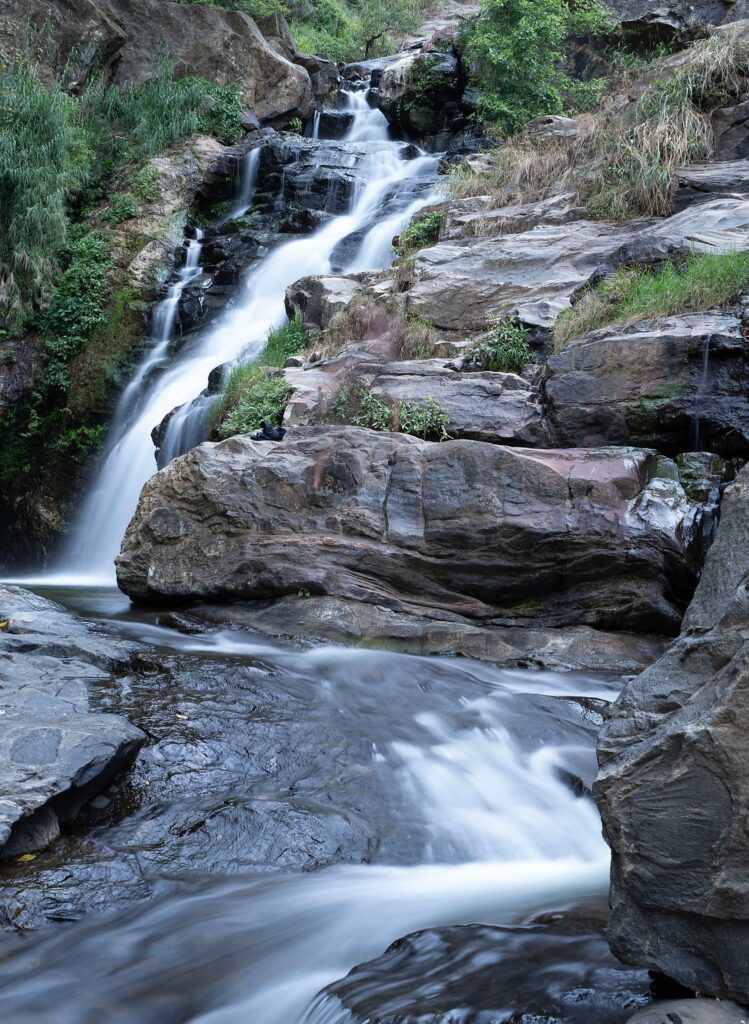
The archaeological importance of the cave provides a very rare glimpse of the distant history of the island and demonstrates proofs of man interacting with nature spanning thousands of centuries. It covers the area from historical fact to myth, deepening the culture associated with Ravana Falls.
Ecological and Environmental Importance
Not only a scenic destination to see but also located within the Ravana Ella Wildlife Sanctuary, a forest conservation area with a high level of plant and animal diversity. The region consists of approximately 1,700 hectares and a natural habitat for such species as purple-faced langurs, Sri Lankan junglefowl, monitor lizards, and other forms of butterflies, birds, and insects.
The surrounding forest helps to help the ecological balance in the region, preserve water storage, variety, and fresh air. The worry of conservationalists since long has been that such structures need to be preserved to sustain natural sites such as Ravana Falls without disturbance because of escalating tourism and urbanization.
Tourism and Economic Impact
Over the past decade, Ravana Falls has emerged as one of Sri Lanka’s most visited natural attractions. Its proximity and ease of access to other natural attractions such as Ella Rock, Little Adam’s Peak, and the Nine Arches Bridge have contributed to its popularity among tourists to the central highlands.
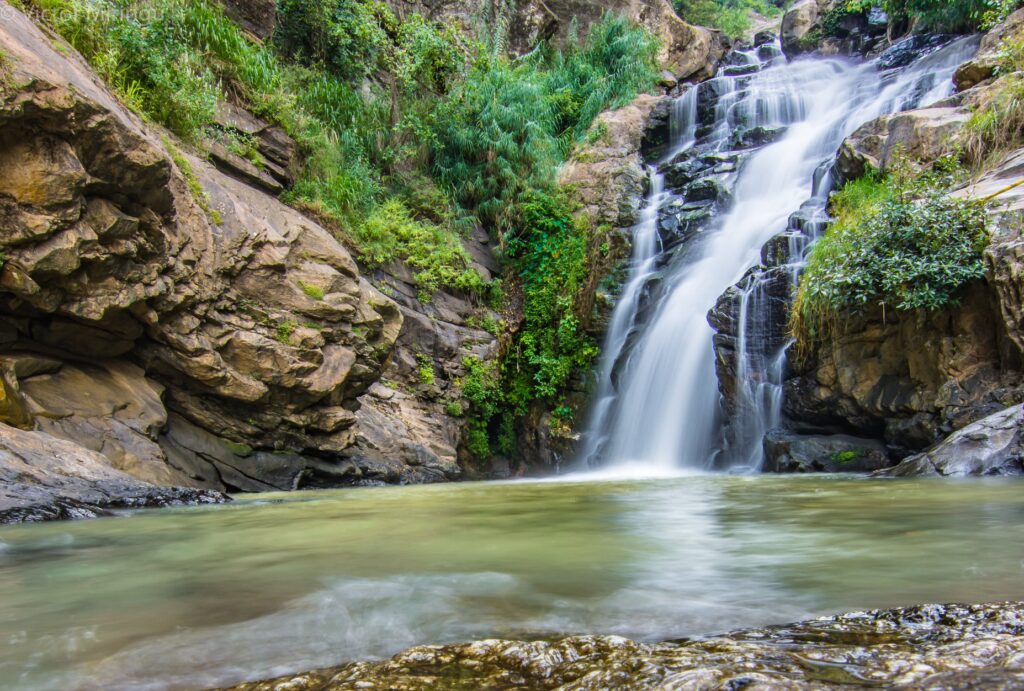
All these local vendors, tuk-tuk operators, guides, and small businesses greatly profit from the continuous influx of tourists. King coconuts, fresh produce, snacks, souvenirs, and even handicrafts are on offer from the street stalls en route to the waterfalls, introducing visitors to some local experience.
However, the increase in tourism has also brought about issues of overpopulation, contamination, and destruction of the environment. Garbage disposal, defacement, and irresponsible swimming in the danger zones of the waterfall are some of the issues being addressed by authorities and locals with campaigns of awareness and ecotourism.
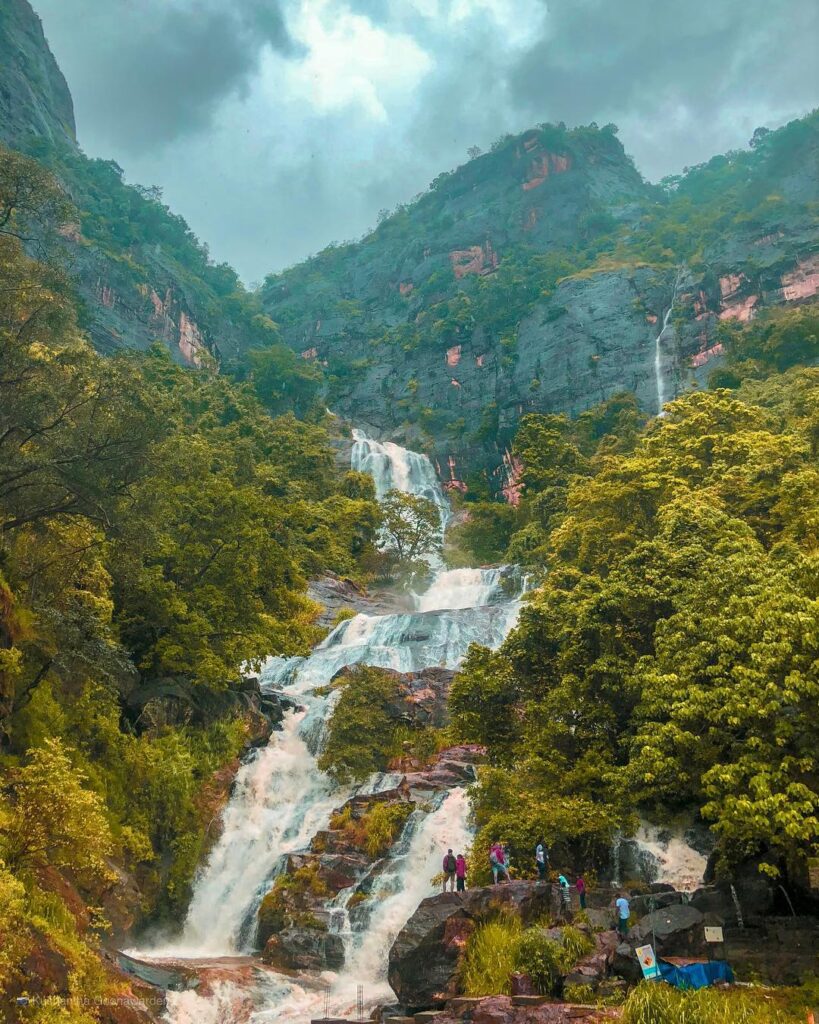
Visitor Experience and Activities
A visit to Ravana Falls is not merely a photo chance. Most tourists like to:
Swim or bathe in the natural pool at the base of the waterfall (caution is, however, required due to slippery rocks and powerful currents). Hike to Ravana Cave, a moderately challenging hike that is 30–45 minutes uphill.Take nature photography, as the forest and surrounding landscape offer excellent views.Learn local history and legends from tour guides or local elders.
In order to have the best, it’s recommended to visit early morning or late afternoon, especially when the dry season between December and March, during which the location is less crowded and the weather is nice.
Safety and Tips
Following are some useful tips for safe and enjoyable travel: Wear proper footwear, especially if visiting the cave for trekking, Do not attempt to climb the rocks or jump into the pool since accidents have occurred previously, Carry drinking water, sunblock, and a hat., Be respectful of the natural and cultural heritage of the destination.
Go with a guide at all times if you do not know the terrain.
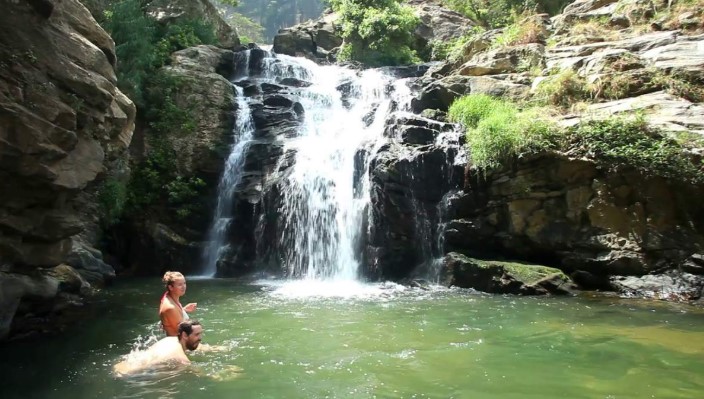
Ravana Falls is not just a waterfall it is a living witness to Sri Lanka’s strong connection to nature, its heritage, and its ancient traditions. Its beautiful cascades, in the backdrop of dense forest and ancient lore, provide not only a tranquil retreat into nature but also an outing into time and myth.
Whether one visits to admire its beauty, explore its spiritual stories, or connect with its prehistoric past, Ravana Falls remains a timeless treasure in the heart of Sri Lanka’s hill country. With careful conservation and mindful tourism, it will continue to enchant generations of visitors from around the world.
From Ella Town (6 km away):
Tuk-Tuk:
- Duration: Approximately 10–15 minutes
- Cost: Around 300–500 LKR (approximately $1.50–$2.50 USD)
- Details: Easily available throughout Ella; a quick and comfortable choice.
Local Bus:
- Route: Any bus heading towards Wellawaya will pass by Ravana Falls.
- Cost: Approximately 50 LKR (about $0.25 USD)
- Details: A budget-friendly option; buses are frequent and the ride takes about 10 minutes.
Private Car or Taxi:
- Duration: Around 10 minutes
- Details: Offers comfort and privacy, suitable for groups or those with more luggage.
From Colombo:
By Bus:
- Route: Take a bus from Colombo to Wellawaya or Badulla.
- Details: From Wellawaya or Badulla, you can catch a local bus or hire a tuk-tuk to Ella.
By Train:
- Route: Board a train from Colombo Fort to Ella.
- Details: The train journey offers scenic views of Sri Lanka’s countryside.
Map of Ravana Falls
